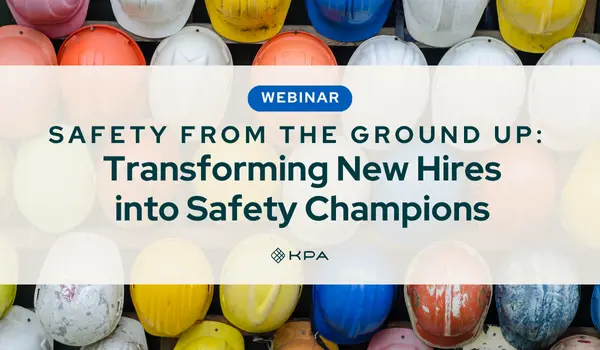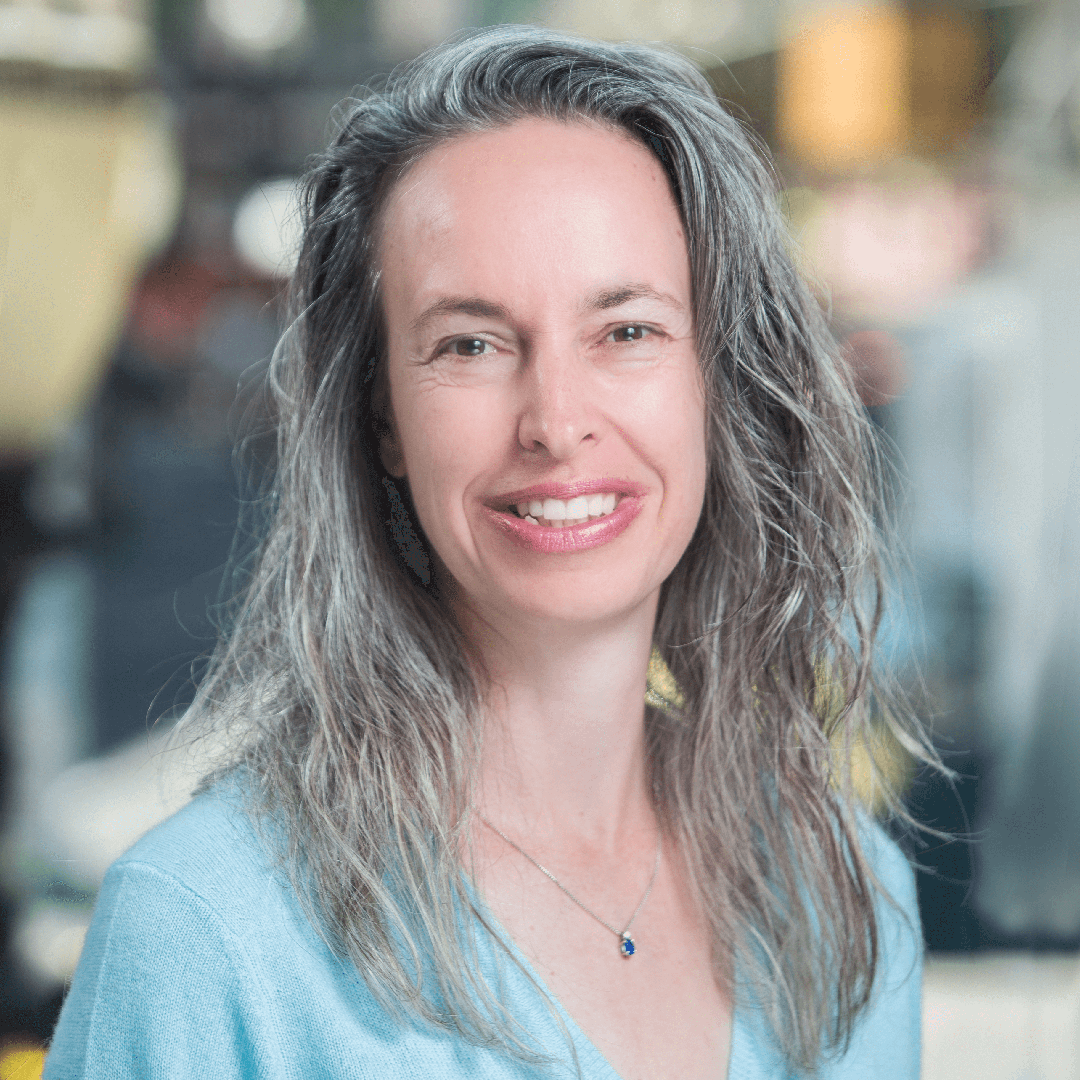Recent data from the Travelers Injury Impact Report reveals a startling statistic: 34% of workplace injuries occur during an employee’s first year. For specific industries, the numbers are even more concerning—53% of claims in restaurants, 47% in construction, and 40% in transportation involve first-year employees. These statistics underscore a critical truth: every new hire represents both an opportunity and a potential risk to your safety culture. In discussions with safety professionals in our KPA Connect customer community, we’ve found this challenge to be widespread across industries, with many organizations actively seeking better approaches to new hire safety.
Strategic Job Description Development
The foundation of a safety-first hiring process begins before you even meet potential candidates. Having a safety professional review job descriptions is crucial for several reasons:
- Accurately outline physical requirements (e.g., lifting capabilities)
- Include specific safety responsibilities and expectations
- Define required safety certifications or training
- Detail safety-critical tasks and competencies
This initial step ensures that you’re attracting candidates who understand and can meet the position’s safety demands.
“Oil and Gas is dangerous…especially for young workers that have spent their lives indoors playing video games. They are now exposed to not only the hazards of large, heavy, moving equipment, but also things as simple as the elements.”
— Chris Gafford, EHS Manager, Ring Energy

Safety From The Ground Up - Transforming New Hires into Safety Champions
In this webinar, we'll explore proven strategies to effectively integrate new hires into your safety programs, transforming them into active contributors to a safer workplace.
Safety-Focused Interview Questions
Traditional interview questions often elicit predictable responses that don’t truly assess a candidate’s safety mindset. Instead of asking basic yes/no questions like “Do you feel safety is important?” consider these more revealing approaches suggested by KPA customers:
- Describe any past workplace safety programs and how you felt about those programs.
- Can you share an example of a time when you identified a safety issue and resolved it?
- Describe a situation where you had to deal with an emergency at work.
- You’re working along a conveyor belt, and an employee across from you drops an earbud under the belt close to you and asks you to grab that for them. How would you proceed?
- Who has ownership of safety at work; why do you believe this?
- Tell me of a time you didn’t follow a safety protocol, and what was the outcome?
- Tell me a time when you took a shortcut which caused and injury or potentially would have caused and an injury. Follow-up question…what did you learn from this event?
- Describe a situation where you had to speak up or take action to address a potential safety hazard in a previous role, even if it meant going against a colleague or supervisor’s decision, and explain how you handled the situation.
These scenario-based questions help evaluate a candidate’s real-world safety judgment and problem-solving abilities.
“Instead of asking about safety directly, and getting the answer they think I want to hear, I ask how they’ve handled changes in the workplace.”
— Stephanie Wade, Process & Compliance Manager, BGDC Distribution
Background Check and Verification Processes
Even the most impressive interview performance can’t substitute for a verified history of safety compliance, making thorough background checks crucial for preventing potential issues before they enter your workplace. A comprehensive verification process should include:
- Reference checks
- Verify employment history
- Assess safety performance in previous roles
- Evaluate adherence to safety protocols
- Additional screening measures:
- Pre-employment physical exams
- Educational credentials verification
- Motor vehicle records review
- Drug and alcohol testing
- Safety-specific assessments
These checks help ensure candidates not only talk about safety but have demonstrated safe practices throughout their careers.
“When I ask a question and then later on ask the same question but a different way and get a different answer, it means they are making stuff up on the spot.”
— Tony Conte, EHS Manager, J. Mullen & Sons, Inc.
Creating Effective Onboarding Programs
The success of your safety program hinges on how well you integrate new employees into your safety culture from day one. An effective onboarding program acts as a bridge, taking employees from their initial orientation through to full integration into your safety-first culture. Rather than treating safety as an afterthought or a one-time training event, successful organizations build it into every stage of the onboarding journey.
“Had a near miss near a pedestrian walkway area. We took that incident and transformed our forklift/pedestrian training to include a walkthrough tour of those areas before training can be signed off on as complete. This was to bring awareness to new employees.”
— Aaron Baxter, Warehouse Safety Coordinator, Covenant Logistics Group, Inc.
Here’s a framework that outlines the essential components of a comprehensive safety onboarding program, showing how each element builds upon the previous to create a solid foundation for workplace safety:
The KPA Evolution: An 18-Year Case Study
Picture this: A fresh-faced new hire arrives early to his first day at KPA, eager to begin his career as an EHS Consultant. The office is empty when he arrives—other team members straggle in half an hour later than expected. Instead of a warm welcome, he’s handed a thick binder and told to “read this.” Later, while being driven to buy equipment, his mentor delivers a crushing blow: “Kid, don’t take this job too seriously. It’s just a stepping stone to something else.”
This was KPA’s onboarding process 18 years ago—a process that could have easily driven away talented employees or fostered a toxic safety culture. But this story has a different ending. Instead of becoming discouraged or perpetuating the cycle, that new hire saw an opportunity for transformation.
Over the next 18 years, KPA completely revolutionized their approach to onboarding. Today, new hires enter a structured, supportive environment that includes:
- Basecamp introductions where all new monthly hires gather for three days of virtual sessions, learning about company processes, policies, and culture while building connections with colleagues
- Carefully crafted 30/60/90-day development plans that provide clear expectations and milestones
- An intensive 60-day job shadowing program paired with veteran employees who provide real-world guidance
- Rigorous operational testing to ensure competency before independent work begins
- A full year of dedicated mentorship to provide ongoing support and development
- A clear career path spanning 1-3 years that shows opportunities for growth and advancement
This transformation didn’t happen overnight. It was the result of years of iterative improvements, feedback from employees, and a commitment to creating a culture where safety and professional development are paramount. The stark contrast between then and now serves as a powerful reminder that with dedication and vision, any organization can transform their onboarding from a perfunctory exercise into a cornerstone of safety culture.
“After a near miss with a crane load, I enhanced our training program by adding hands-on simulations and real-world case studies to improve operator awareness and safety.”
— Madison Durade, EHS Specialist, Ram Aviation Space & Defense
This evolution demonstrates how organizations can transform their onboarding from a basic orientation into a comprehensive safety development program.
Creating a Culture of Safety
KPA’s transformation illustrates a fundamental truth about safety culture: it isn’t built overnight but through intentional, sustained effort. Just as KPA evolved from a company where mentors dismissed the importance of the job to one where mentorship is a cornerstone of professional development, organizations must be willing to examine their practices critically and commit to long-term change.
The modern workforce is increasingly aligned with this safety-first mindset—29% of workers now actively ask about safety practices during job interviews. This represents a significant shift from the old “just get it done” mentality to one where safety is a key factor in career decisions. Smart organizations, like KPA, recognize this evolution and position themselves accordingly, transforming their safety programs from mere compliance exercises into genuine competitive advantages.
Ultimately, creating a genuine safety culture requires more than just updating manuals or implementing new procedures. It demands a holistic approach that begins with hiring and extends through every aspect of an employee’s journey with the organization. When companies commit to this level of transformation, the results ripple throughout their entire operation—reducing incidents, improving retention, and creating an environment where employees feel valued and protected.
“While there are plenty of inherent risks in our field, I think the biggest one is the dynamics within the crews themselves. If they aren’t all on board with watching out for the new hires and making sure each task is done safely and correctly, while transferring the knowledge of why it is being done that way, we are really just setting ourselves up for a future failure.”
— Timothy Shaw, Information Success Coordinator, McCumber Well Service
How KPA Can Help You Build a Safety-First Hiring Program
Building a comprehensive safety-first hiring process requires expertise, resources, and a commitment to continuous improvement. This is where KPA’s extensive experience can make a significant difference for your organization.
With over 30 years of expertise in EHS management, KPA offers the tools and guidance needed to transform your hiring and onboarding processes:
- EHS Software Solutions: Our flexible software platforms help you track candidate safety qualifications, monitor training completion, and measure the effectiveness of your onboarding program with real-time analytics.
- Expert Consulting Services: KPA’s team of certified safety professionals can help you develop safety-focused job descriptions, design effective interview protocols, and create comprehensive onboarding programs tailored to your industry’s specific risks.
- Award-Winning Training: Our library of over 800 training courses includes specialized content for new hires that can be integrated into your onboarding program, ensuring consistent safety messaging from day one.
The transformation KPA experienced in its own onboarding program has informed our approach to helping clients. We understand firsthand the challenges and opportunities that come with evolving a safety culture, and we’re committed to helping you achieve similar success.
Ready to take the next step in building your safety-first hiring program? Contact KPA today to learn how our combination of software, consulting, and training can help you reduce first-year incidents and strengthen your overall safety culture.
Remember: Every new hire represents an opportunity to strengthen your safety culture. With KPA as your partner, you can transform these opportunities into lasting safety success.
Related Content
Explore more comprehensive articles, specialized guides, and insightful interviews selected, offering fresh insights, data-driven analysis, and expert perspectives.

